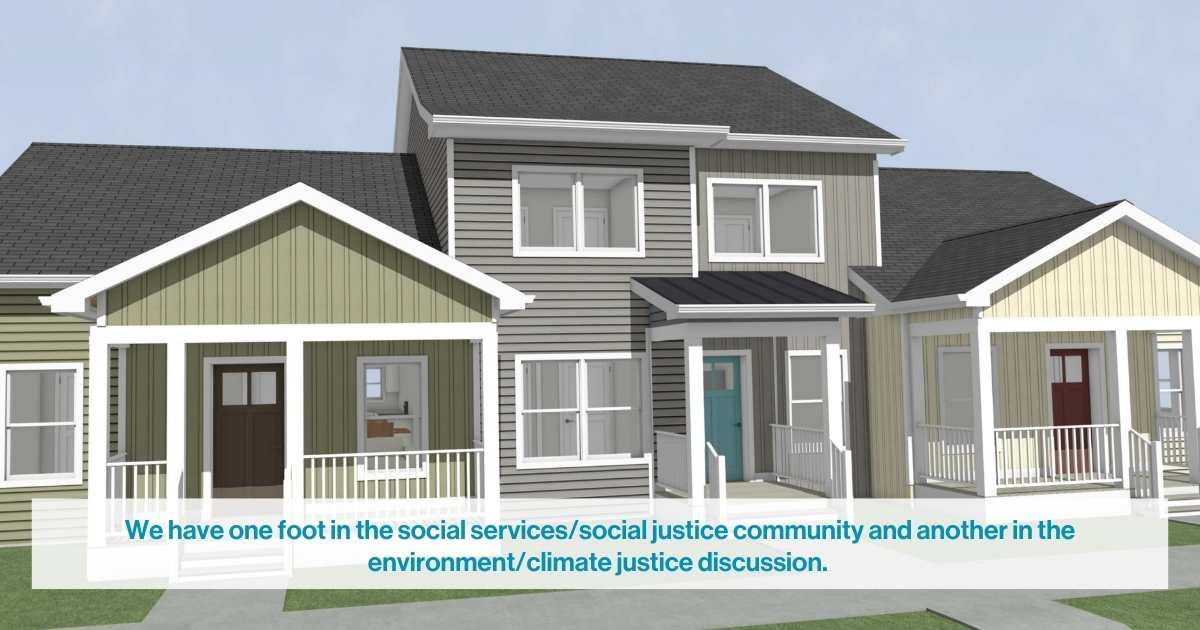By Mark Ogland-Hand, Senior Donor Relations Specialist at Habitat Kent
In December 2021, a study on anxiety and distress in young people created quite a stir.
The worldwide survey of over 10,000 people aged 16 -25, reported 45% admitted their worry about the environment was affecting their daily life. 75% said they were afraid of the future, and sadly, 56% believe that humanity is doomed. Imagine living with that burden every day.
Reticence toward our world’s future is undoubtedly fueled by the complexity of the climate issue and the wide variety of solutions offered to combat it. We’re watching and waiting for science, industry, and policymakers to do something big, and our suspicion is growing that they’re like baseball players converging on a pop-up, each expecting the other to make the play and, in the end, the ball drops to the ground at their feet.
A lot of that is perception, because in reality, throughout our community and world, people are hard at work trying to eliminate greenhouse gases (GHG). Meijer Corporation plans to cut its carbon footprint by 50% by 2025; GM and Spectrum Health plan to be carbon neutral by 2040, and Steelcase plans to be carbon negative by 2030. These are huge and admirable commitments.
At Habitat Kent, we realize that we have a role in eliminating GHG emissions because the operational carbon emitted by residential housing accounts for about 20% of all GHGs in the U.S. That’s a big slice of the pie.
The good news is that we know how to get our houses to carbon neutrality, and it’s as easy as 1-2-3.
Step 1: Make homes well insulated and sealed.
The Scandinavians have a great saying, “There’s no such thing as bad weather, just bad clothing.” We like to say, there’s no such thing as bad weather, just poorly sealed and under-insulated housing.
Here in Michigan, we have a lot of older homes in this category. 60% of the housing stock in Grand Rapids was built prior to 1959, and unless they’ve been upgraded, they have little to no insulation and leak air like a sieve.
As one energy reporter said, “The past philosophy was to spend a lot of money and build a house with a lot of holes and then spend a lot more money to pump it full of hot air.” If your house was cold, it simply meant you needed a more powerful heater, not fewer holes.
Whether new or old, if a house is well-sealed and insulated, you can reduce the size of the heater, the size of the utility bill, and the size of the carbon footprint. In fact, if you do it well, you can economically do Step 2.
Step 2: Make houses all-electric.
“Now we’re cooking with gas!”
We’ve all heard the expression. It’s typically used in relation to something that makes our life easier, and some of us at Habitat Kent are old enough to remember visiting our grandparent’s farmhouse where food was still cooked over a wood stove. That quaint, even nostalgic memory is coupled with the memory of the hard work required to “get the winter’s wood in.”
As wonderful and convenient as natural gas is compared to the fuels it replaced – wood, coal, fuel oil – it still produces greenhouse gases when burned; and if it escapes into the air before it’s burned, it is 84 times worse for the atmosphere than CO2.
It stands to reason that if we want to eliminate the significant emissions that come from our homes, then we must stop burning fossil fuels and gases inside them. The easiest, most readily available alternative is electricity, but historically that has been the more expensive option.
Until now. “Now we’re cooking with electric!”
When a Michigan house is well-insulated and sealed, it can efficiently and economically be heated by an Air-Source Heat Pump. Essentially, this device is an air conditioner that works both ways, depending on the season. In winter, it can find heat in the air, amp it up using compression and refrigerants, and bring that heat inside a home. In the summer, it can transfer the heat from your home to the outside.
The important thing to note is that if properly installed, air-source heat pumps can reach 300% efficiency whereas old, expensive-to-operate electric baseboard heaters run at only 100% efficiency.
Because of their extreme efficiency, these units – when installed in a well-insulated home – are more carbon-friendly than high-efficiency gas-fired furnaces – even on today’s dirty grid. As Consumers Energy cleans up West Michigan’s grid, air-source heat pumps will correspondingly become even “greener,” while their gas-fired counterparts will still be chugging away emitting the same levels of greenhouse gases.
The best news of all – if our grid doesn’t get cleaned up, our homes can still become carbon neutral, because of step 3!
Step 3: Make homes ready for solar panels.
Homes should be ready to generate as much energy onsite as they consume just in case the renewable goals for our electrical grid fail to materialize. An average Michigan home uses just under 7,000 kilowatt-hours of electricity per year, and 18, 400-watt panels should probably produce enough electricity to cover that home’s use.
Of course, the better insulated and sealed a house is, the less energy it will need!
In preparation for future solar panels, here are a few things we plan for (and you can too!):
- Work with plumbers to place vent stacks out of the way from future solar panels
- Run a conduit between the attic and the current panel
- Make sure the electrical panel is sized and located appropriately to handle the hardware for future connections to a solar array
- Don’t plant huge trees on the south side of the house
- If a new house, design the roof slope with a future panel array in mind (those 18 panels mentioned above will require about 270 s.f.)
The price of solar panels has dropped 90% in the past decade, while global solar deployment has increased by 400%. We don’t know what the future holds regarding pricing and efficiency of solar panels, but if our homes need them to become carbon neutral, they’ll be ready to answer that call.
Why the Carbon Footprint Initiative and Why Habitat
Habitat has always been about HOPE. We believe change is possible if we all work together. After building hundreds of homes in Kent County and seeing the resulting change in families’ lives, Habitat Kent’s optimism for the future is undiminished! Humanity is not doomed, we just sometimes forget what we’re capable of accomplishing when we all work together!
By making sure our homes are on the path to carbon neutrality, Habitat Kent is simply expanding the breadth of our hope for the future!
Our vision statement affirms that we’re “the hands and feet of God’s grace in the world.” We know that breaking the chains of poverty through affordable housing doesn’t happen unless we pick up our hammers and get to work. Likewise, preserving God’s good creation so that future generations can flourish in it, won’t happen until we get to work. We can’t let the ball drop. There is so much to do right away. Together, we can take 20% of carbon emissions off the table, we just have to make and execute the plan to do it!



